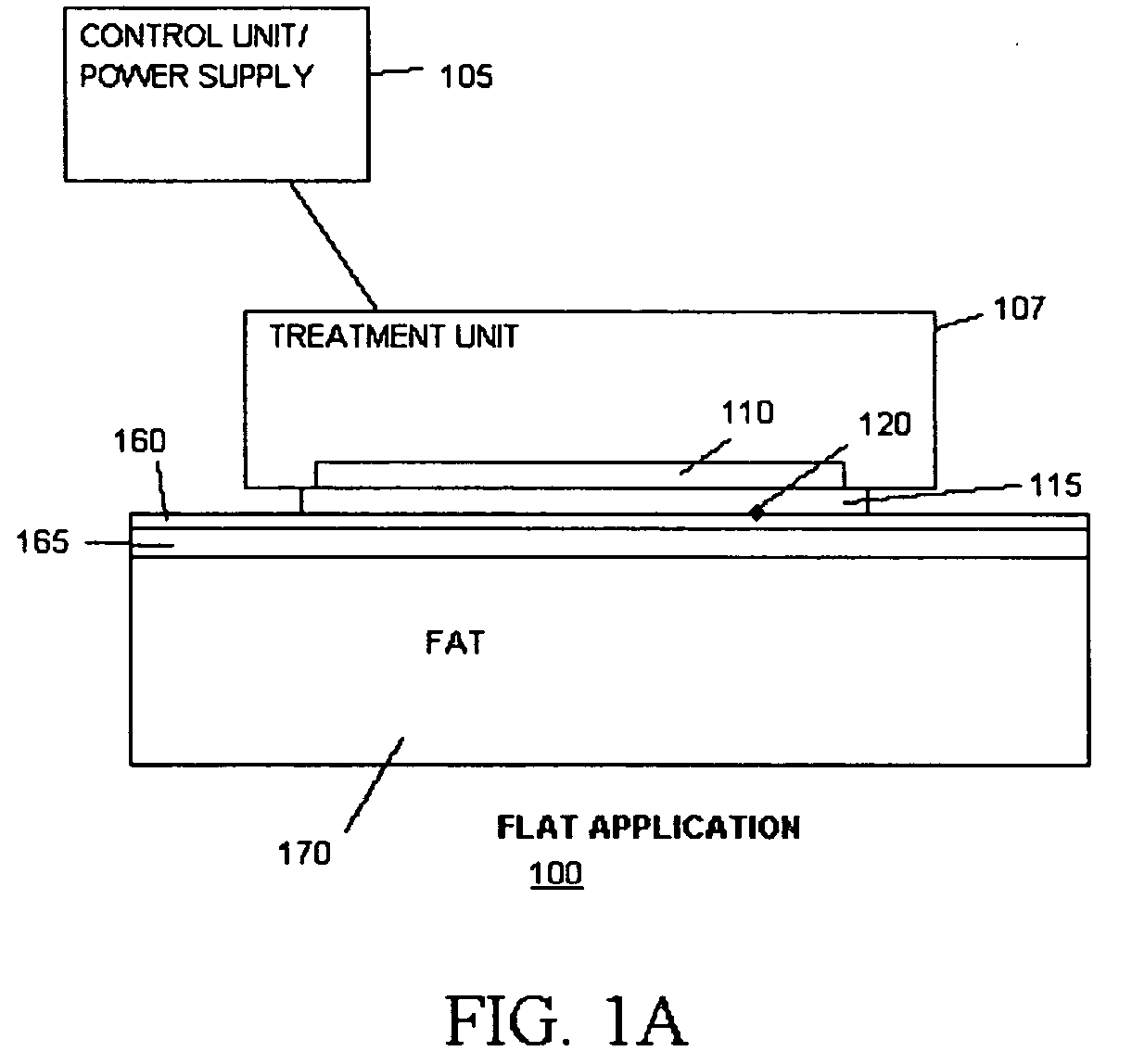Methods and devices for detection and control of selective disruption of fatty tissue during controlled cooling
- Summary
- Abstract
- Description
- Claims
- Application Information
AI Technical Summary
Benefits of technology
Problems solved by technology
Method used
Image
Examples
example 1
Selective Damage to Fatty Tissue by Controlled Cooling In Vivo
[0182] Methods of the present invention were carried out on a white, 6 months old, female, Hanford miniature pig (“Pig I”) and a black, 6 months old, female Yucatan Miniature Pig (“Pig II”). The pigs were anesthetized using Telazol / Xylazine (4.4 mg / kg im+2.2 mg / kg im). Inhalant anesthetics (Halothane or Isoflurane (1.5-3.0%) with Oxygen (3.0 L / min) was delivered by mask and filtered with an F-Air canister only if the injectable anesthetics did not provide enough somatic analgesia. Several test sites were be marked with micro tattoos by applying India Ink to the corners of each test sites. After mapping of the test sites cold exposures were performed using a cooling device as described in FIG. 1A. The area of the treatment interface was a flat area of the size of 2×4 cm2 with a built-in temperature sensor. The interface was in thermal contact with a thermoelectric chiller, which was electronically regulated by a control u...
example 2
Temperature profile Measurements at Various Tissue Depths
[0191] This study was performed using a 6-month old female black, hairless Yucatan Minipig (Sinclair Research Center, Columbia, Mo.). The pig will was anesthetized using Telazol / Xylazine (4.4 mg / kg im+2.2 mg / kg im). Inhalant anesthetic (Halothane or Isoflurane (1.5-3.0%) with Oxygen (3.0 L / min) was delivered by mask and filtered with an F-Air canister only if the injectable anesthetic did not provide enough somatic analgesia. The test sites were marked with micro tattoos by applying India Ink to the corners of each test site and inserting hypodermic needles into such test site corners. The cold exposure was performed with a convex round copper plate attached to a heat exchanger, which was chilled by a circulating cooling agent tempered to −7° C. The exposure time ranged between 600 to 1200s. Table 3 depicts the parameters of the cooling application and the results obtained at various sites in Pig III. The cold plate had three...
example 3
Selective Loss of Subcutaneous Fat Over Time
[0203] Several months after treatment, selective loss of subcutaneous fat was maintained in Pig III, which was fed a standard diet. No scarring or cutaneous damage was observed, as described in further detail herein.
[0204]FIG. 14 indicates where samples from test site 11 (shown in FIG. 13 C) were obtained 3.5 months post-treatment. These samples were used for histologic analysis, as shown in FIGS. 15 and 16. A scale 1400, has 1 cm units and 1 mm subunits. The cross section depicts the epidermis 1401, the dermis 1402, the superficial fat layer 1403 and the deep fat layer 1404, which are separated by a fascia 1405 (marked by a dashed line). The treatment area 1406 contains a marked rectangle 1407 within the underlying fat, which indicates the location of the histology shown in FIG. 15. The area 1408, which is outside of the treatment area contains a marked rectangle 1409 within the underlying fat, which indicates the location of the histol...
PUM
 Login to View More
Login to View More Abstract
Description
Claims
Application Information
 Login to View More
Login to View More - R&D
- Intellectual Property
- Life Sciences
- Materials
- Tech Scout
- Unparalleled Data Quality
- Higher Quality Content
- 60% Fewer Hallucinations
Browse by: Latest US Patents, China's latest patents, Technical Efficacy Thesaurus, Application Domain, Technology Topic, Popular Technical Reports.
© 2025 PatSnap. All rights reserved.Legal|Privacy policy|Modern Slavery Act Transparency Statement|Sitemap|About US| Contact US: help@patsnap.com



